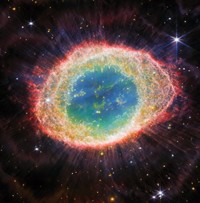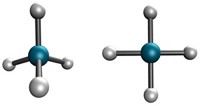Advertisement
Grab your lab coat. Let's get started
Welcome!
Welcome!
Create an account below to get 6 C&EN articles per month, receive newsletters and more - all free.
It seems this is your first time logging in online. Please enter the following information to continue.
As an ACS member you automatically get access to this site. All we need is few more details to create your reading experience.
Not you? Sign in with a different account.
Not you? Sign in with a different account.
ERROR 1
ERROR 1
ERROR 2
ERROR 2
ERROR 2
ERROR 2
ERROR 2
Password and Confirm password must match.
If you have an ACS member number, please enter it here so we can link this account to your membership. (optional)
ERROR 2
ACS values your privacy. By submitting your information, you are gaining access to C&EN and subscribing to our weekly newsletter. We use the information you provide to make your reading experience better, and we will never sell your data to third party members.
Physical Chemistry
Probing Element 112's Chemistry
The superheavy element behaves like mercury
by Mitch Jacoby
May 7, 2007
| A version of this story appeared in
Volume 85, Issue 19

ON THE BASIS OF a nuclear synthesis experiment that yielded just two atoms of element 112, scientists have determined that the super heavyweight's chemical properties are similar to those of mercury, the element directly above it in the periodic table.
Predicting electron orbital structures of transactinides is challenging because of so-called relativistic effects. That term refers to the energy-altering influence of the large concentration of positive charge in the nuclei of the heaviest elements on the electrons orbiting those nuclei. Those forces can alter the configuration of an atom's valence orbitals—and hence its chemical properties—compared with the electronic structure expected solely on the basis of an element's position in the periodic table.
In the case of element 112, the transactinide's atomic number places it in group 12 together with zinc, cadmium, and mercury. Earlier theoretical work suggests that 112 should indeed exhibit chemical behavior typical of group 12 elements. Other calculations, however, predict that 112 will behave like radon, a noble gas in group 18.
Now, a team of 25 researchers from Switzerland, Russia, and Poland reports that an experimental study that directly compared element 112's volatility and adsorption characteristics with those of mercury and radon indicates that the transactinide behaves like its lighter group-12 homolog, mercury (Nature 2007, 447, 72).
By firing a beam of 48Ca projectiles at a 242Pu target that was doped with Nd2O3, Robert Eichler of the Paul Scherrer Institute, Villigen, Switzerland, and coworkers from the Joint Institute for Nuclear Research, Dubna, Russia, and elsewhere produced two atoms of element 112, as well as various radioactive mercury and radon nuclei. The products were then swept in a gas stream to a series of temperature-controlled gold-covered detectors. The group observed that similar to mercury (and in contrast to radon), element 112 is mildly volatile and bonds readily to gold. With only two atoms of the transactinide to look at, it remains unclear if the element can also take on mercury's signature liquid form.
The team notes that the relatively long lifetimes of the two atoms (several seconds as opposed to a fraction of a second) add to the growing experimental evidence for the existence of the island of stability, a region on the chart of nuclides in which certain superheavy nuclei are predicted to be especially stable.





Join the conversation
Contact the reporter
Submit a Letter to the Editor for publication
Engage with us on Twitter